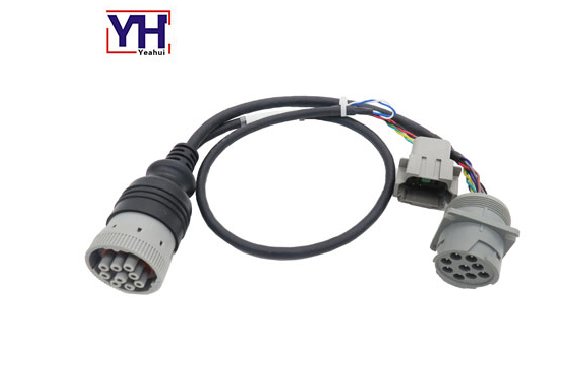YEAHUI ELECTRONIC LIMITED Yeahui Cable, connector to the world!
Home / blog
One. Scorch
Phenomenon characteristics: high-temperature control, temperature control instrument failure (such as poor contact of thermoelectric Europe). b. The gum is very smoky, with a strong smell and a crunchy sound. C. Middle coke-like coke. d. Cracks and pores in the glued joint

Cause: The temperature control is too high. b. The scorch on the screw has not been cleaned for a long time. C. After a long shutdown, the plastic in the screw will age and decompose. d. If the heating time is too long, the plastic in the screw will age and decompose. e. Change the mold multiple times and change the color to break down the plastic. F. The gland of the machine head is loose, and the rubber material in the clamping channel is kept for a long time, causing aging and decomposition. G. Instrument malfunction.
Solution: Check the heating system. b. Clean the machine head and tighten the screws regularly. C. According to the process of heating, pay attention to the time. d. Change the mold, change the color in time, and clean to prevent noise and scorching. e. Prevent the gland from entering the glue. F. If scorching occurs, immediately clean the machine head and tighten the screws.
Two. Poor plasticization
Phenomenon characteristics: a. There is toad-like phenomenon. b. Low temperature control. c. The surface is darkened, there are tiny cracks or unplasticized particles, and the middle is raw rubber. c. There are obvious marks on the glue seam.
Reason: Temperature control is too low or improper control. b. There are resin particles that are difficult to plasticize. c. The screw speed is too fast, the rubber particles have not completely reached the plasticization. d. The quality of raw materials. e. The head pressure is not enough.
Remedy: a. Check the plastic quality. b. Control the temperature according to the process. c. Properly reduce the screw speed and extend the plasticizing time. d. Use cooling to enhance plasticization and compactness of plastics. e. Reasonably select the mold to increase the pressure of the glue outlet. f. The honeycomb board relies on the screw side to add omentum to strengthen plasticization.
Three. Pimples
Phenomenon: a. There are small crystal points and small particles on the plastic surface. b. There is scorch on the plastic surface (special type glued seam surface). c. The plastic contains impurities. d. Poor plasticization.
Reasons: a. The temperature control is too low, and the unplasticized rubber compound is extruded. b. The quality of the plastic is poor (there are resins that are more difficult to plasticize). c. Impurities are mixed in when feeding. d. High temperature control, producing scorched pimples. e. It is not tight to the molded cover, causing aging and deterioration after entering the glue. f. The screw is not cleaned, there is old glue. g. The uneven size of plastic particles causes poor plasticization.
Remedy: a. The plastic itself causes pimples, and raise the temperature appropriately. b. Check if there are impurities in the plastic. If impurities are found, clean the machine head and screw to eliminate scorch. c. When the plasticization is poor or resin pimples, increase the temperature properly and reduce the screw speed. d. Add omentum in front of the honeycomb board.
Four: bubbles, stomata, puffy eyes
Phenomenon characteristics and reasons: a. The temperature is too high, the plastic decomposes to produce gas. b. The plastic is wet or wet. c. Moisture or volatile substances on the wire core or cable core. d. Spilling water droplets on the surface of the polyethylene (PE) plastic that did not enter the sink will form small bubbles.
Remedy: a. The temperature is adjusted properly to prevent the local temperature from being too high. b. Check the quality of the plastic, do not use it when it is wet. c. Dry the plastic to remove moisture and moisture. d. Preheat the wire core or cable core to remove moisture and moisture.
Yeahui is a connector supplier with 11 years of experience in developing high-quality connectors and wiring harnesses. We have many types of products, including obd connector, circular connector, agricultural connector and so on. We can meet the requirements of various customers. Feel free to learn more about connectors or buy our connectors, looking forward to your message.
More about COVID-19(Definition and test of harness waterproof grade).



